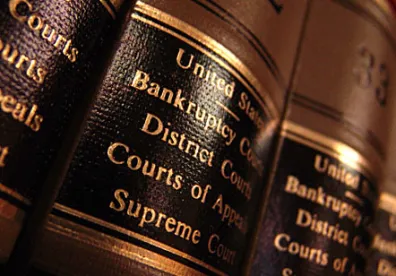There is something particularly dispiriting about the sight of a preference demand letter received, or complaint filed by the debtor, seeking the return of a payment (or payments) that you received for a prior job well done. But, all is not lost — don’t throw in the towel before you begin. The payment you received may not be recoverable by the debtor’s estate.
The Basics
Imagine that you have worked on a construction project under the terms of your contract with the owner (if you are the prime contractor) or the prime contractor (if you are a subcontractor). To get paid, you had to sign a lien waiver, or the bank would not agree to fund the payment draw. Because you have no idea that the owner or the prime contractor is contemplating filing for bankruptcy protection, you sign the lien waiver and get paid.
Then, out of nowhere, maybe two years in the future, you receive a demand letter to return the payment you received. The letter says something about a bankruptcy and a preference. As it turns out, the owner or prime contractor filed for bankruptcy after you were paid.
The demand letter alleges that the debtor can recover the payment as a preference because: (1) the transfer was to or for the benefit of a creditor (you); (2) the transfer paid for or satisfied an existing debt (your outstanding invoices); (3) the payment was made while the debtor was insolvent (this is presumed); (4) the payment was made within 90 days before the bankruptcy was filed; and (5) the creditor received more than it would have if the debtor were liquidated. The first four elements of the demand will likely be proven by the debtor with little difficulty (although the third element, insolvency, is sometimes contested). However, in the context of preference claims in an owner bankruptcy case against contractors and subcontractors, the fifth element might be a shield to protect you from having to return any money.
The Debtor Might Not Be Able to Meet All of the Elements of Its Claim
Depending on where the debtor filed its bankruptcy case, the mechanics’ lien rights that you waived in exchange for the payment you received might protect you from having to return any payment you received. The fifth element of a preference payment is that the creditor received more by receiving that payment than it would have received if the debtor were liquidated. In almost every bankruptcy case, that standard will be met because general unsecured creditors usually are not paid in full. However, creditors with lien rights (mechanics’ lien rights in your case) might be treated differently. Some courts have determined that if you were not paid even though you signed a lien waiver, you still might have been able to assert your mechanics’ lien rights (the ones that were otherwise waived when you signed the lien waiver).
Asserting those mechanics’ lien rights might make you a secured creditor in the event the owner is the debtor. And, as a secured creditor, you could argue that the debtor cannot meet the fifth element because, as a secured creditor, you would have been paid in full anyway.
A very simplistic example is if the property is worth $1 million and at the time you were paid there were a $500,000 mortgage and $200,000 in mechanics’ liens on the property at that time. Had you been paid pursuant to the lien waiver, your lien rights would be gone. However, some courts have determined that if you execute a lien waiver but are not paid, then that lien waiver is ineffective. Therefore, you might still have lien rights in the property. If the lienable amount is less than $300,000 you would have been paid in full. Because you would have been paid in full, the last element is not met and the payment would not be a preference payment.
Defenses to a Preference
Even if the debtor can meet all five elements, all is not lost. The Bankruptcy Code provides defenses that might let you keep the money you received. While there are a number of these defenses, your mechanics’ lien rights implicate two of them: (i) the “contemporaneous exchange defense” and (ii) the “new value defense.” Depending on where the debtor filed for bankruptcy, one or both of these defenses might be available based upon the right you had to file a mechanics’ lien, but which you gave up in exchange for payment.
The contemporaneous exchange for new value and the new value defense are similar because both require that you provide value to the entity that paid you after you received the payment. Some courts have found that releasing your mechanics’ lien constitutes that new value. These courts determine that because you could have asserted a mechanics’ lien on the property, the fact that you released the mechanics’ lien in exchange for the payment constitutes value for the payment. (Note, this analysis differs if the debtor is the owner, a lessee or the prime contractor, because the owner is the only one with an ownership interest in the property and therefore the only party against which you might have lien rights). Also, if you continue to work on the project, any unreleased mechanics’ lien rights might also constitute new value. Similarly, any work that you have done on the project since the last payment, whether or not lienable, might also be new value.
Conclusion
Your waiver or release of mechanics’ lien rights during the course of a construction project might be a defense to a preference demand. The analysis is based on the facts of each case and depends on where the debtor filed its bankruptcy case. However, you should not automatically repay a preference demand without first considering these issues with bankruptcy counsel who are experienced in construction project bankruptcies.



 />i
/>i

